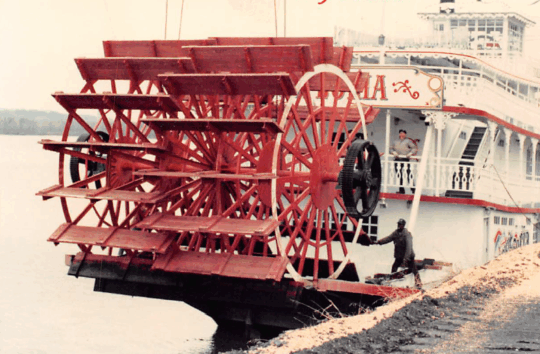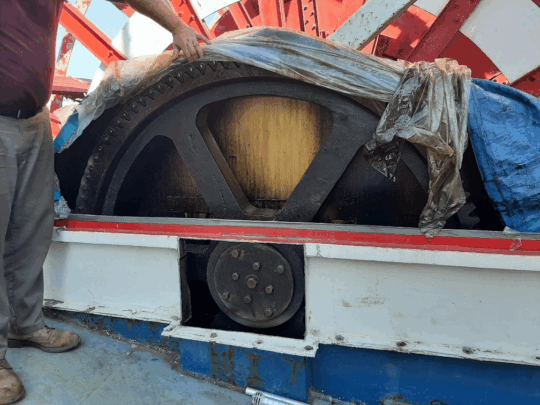Background:
A riverboat company faced a challenge dealing with the lack of effective control over paddlewheel rotation, particularly during deceleration. The absence of a motor brake or dedicated deceleration mechanism leads to prolonged “coasting” after motor disengagement. This extended propulsion compromises maneuverability, making precise navigation difficult in confined waterways and during docking. The inability to rapidly reduce thrust hinders quick responses to changing conditions or sudden demands for speed adjustment.
The riverboat company reached out to a marine engineering firm for assistance developing an industrial braking system to enable active deceleration, allowing the boat to operate similarly to a conventional vessel. They were searching for a braking system to permit faster and more precise adjustments, drastically reduce transition times between forward and reverse, and enhance overall maneuverability for more precise steering and controlled approaches. Also, the addition of a braking system would improve safety for passengers, crew, and other vessels by providing greater control and enabling quicker responses to unforeseen events on the water.
The marine engineering firm reached out to Hindon for assistance designing this industrial braking system, including ensuring that it would fit within the space required and provide adequate torque to quickly slow the vessel.

The paddlewheel was a common method of powering riverboats in the 1800s and early 1900s, but these boats are still commonly used as tourist attractions today.
Application Challenges:
- Space constraints for installation of the new industrial brake and its accompanying brake disc
- A high range of braking torque adjustability was required due to a lack of precise knowledge of the actual torque required for ideal operation of the paddleboat during various maneuvers

Space constraints on the shaft where the brake disc and calipers were to be mounted necessitated a compact, thoughtfully-designed braking system.
Solution:
Because the brake was only meant to be used to slow the boat instead of holding the wheel stationary in the event of a power loss, the customer needed an actively applied brake rather than a failsafe brake.
As pictured above, the customer had limited space available to install a new brake disc for this application; the new system would have to provide up to over 20,000 ft-lbs of braking torque using a brake disc diameter of just 22 inches. There was also insufficient clearance to install large calipers and mounting hardware, so the new system would need 2 compact calipers capable of sharing the load. This constraint, combined with the need for high adjustability to tune the system to the ideal braking torque, led Hindon to select a hydraulically-applied spring-released disc braking system for this application.
The new braking system included a hydraulic power unit (HPU) to allow for manual adjustment of hydraulic pressure to vary braking torque. The HPU uses a dump valve to close the hydraulic circuit to the tank, allowing pressure to build at the brake. Simultaneously, control power for the pump motor starter is enabled to start the hydraulic pump. A pressure switch in series with the motor control power connection turns off the pump motor when the desired pressure is reached, maintaining hydraulic pressure on the brake caliper. To release the brake, power to the valve and motor starter is removed, causing the valve to spring return to the open position and dump fluid back to the tank.
Although it lacks more sophisticated controls required for on-the-fly adjustments, this HPU can be easily adjusted to account for the driver’s observations by tuning the input pressure during commissioning to prevent excessive shock load. The system can then be pulsed on and off as needed to allow for shaft reversal.
Hindon’s custom-engineered braking system greatly improved the riverboat company’s operational efficiency and safety, redefining the level of control operators had over the vessel during critical maneuvers. This enhanced responsiveness and control allows captains to navigate crowded rivers and challenging docking situations with confidence and precision, resulting in an overall more satisfying experience for the riverboat company’s customers.